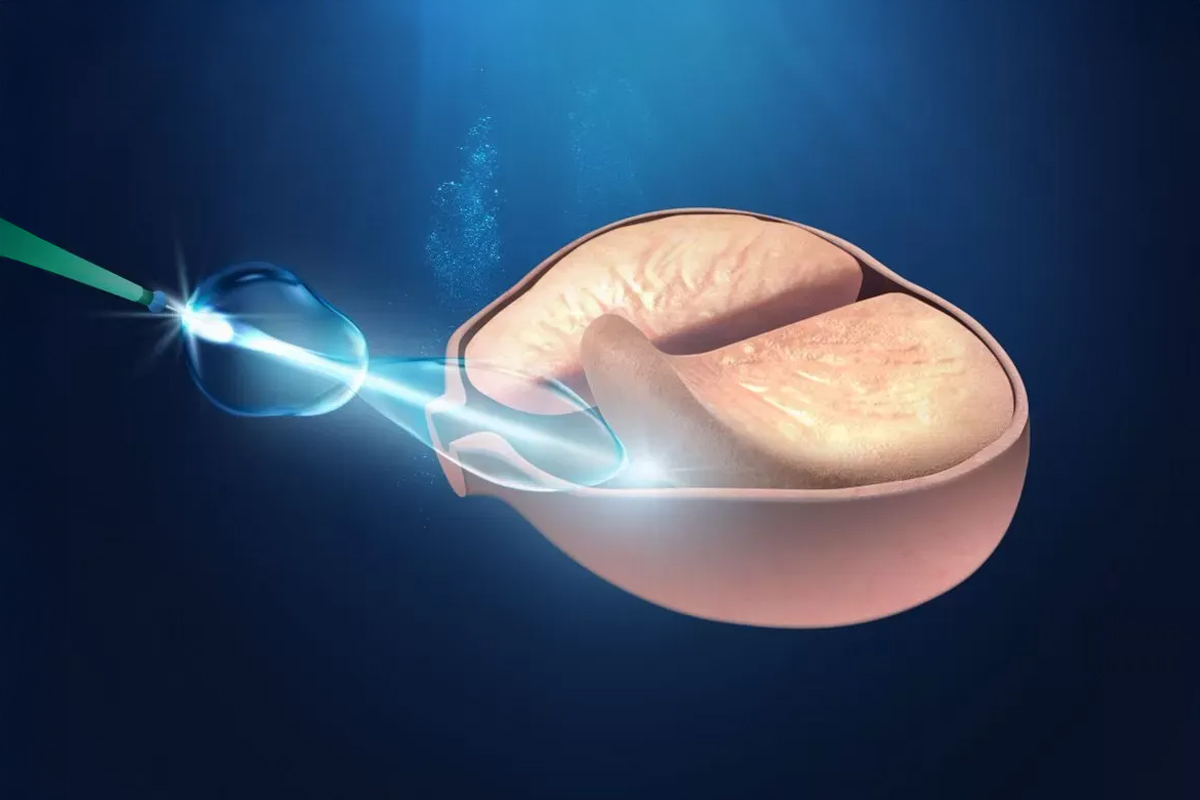The prostate is a gland that is part of the male reproductive system.
Está ubicada en el bajo vientre, la encontramos debajo de la vejiga, rodeando la parte inicial de la uretra masculina (conducto del aparato urinario y genital en el hombre), localizada enfrente del recto. La glándula prostática contiene células que producen parte del líquido seminal que protege y nutre a los espermatozoides contenidos en el semen.

The male hormones that stimulate the growth of the prostate gland from the development of the fetus. The prostate of a young man is about the size of a walnut, and with the passage of time, increases its size. The prostate continues to grow until it reaches adulthood, and maintains its size while producing male hormones. For various reasons, the prostate gland may suffer from inflammatory processes in both acute and chronic. Usually after 50 years of age, or even before, 75% of men already have a transformation of a benign (BPH) or malignant in the tissue of this organ (prostate cancer).
The control routine from the age of 50 is intended to detect in the early stages, the morphological alterations that may be causing symptoms,, also allowing you to make timely appropriate treatment.
Prostate problems the most common
- Prostatitis: it is an infection, usually caused by bacteria.
- Benign prostatic hyperplasia, enlarged benign prostate hypertrophy or BPH: increase in the size of the prostate, which can cause (among other symptoms) dribbling after urinating or the need to urinate more frequently (especially at night).
- Prostate cancer: cancer that responds best to treatment when detected early.
BPH, or benign prostatic Hyperplasia
What is the meaning of BPH or enlarged prostate?
Benign prostatic hyperplasia, also known as BPH is a benign growth (non-cancerous) in the size of the prostate gland. The causes of benign prostatic hyperplasia (BPH) are multifactorial, however, it is known that two requirements are necessary for this disorder, aging, and the production of testosterone by the testes. The men who have had their testicles removed for various reasons or for the development of testicular cancer will not have benign prostatic hyperplasia (BPH).
Benign prostatic hyperplasia (BPH) is a very common disease in men. A small enlargement of the prostate gland is present in many men over 40 years and in over 90% of those older than 80 years.
The growth of the gland prostatica, you can go compressing progressively the urethra and cause difficulty urinating. This happens, because the compression prevents the flow of urine down from the bladder into the urethra and then to the outside. The possible consequences of BPH are retentions of urine in the bladder (the patient is unable to urinate, even with desires), if the inflammation be very serious, it can be blocked completely the urinary system and require the placement of a urinary catheter that places a Physician through the urethral meatus, usually in the guard. The reflux of urine into the kidneys and/or the need to urinate frequently are other possible complications of BPH.
Symptoms of BPH (benign prostatic Hyperplasia)
There are two types of symptoms: obstructive symptoms and the symptoms irritative.
- Obstructive symptoms it is manifested by: a decrease in the size (smaller amount) and the force of the urine stream, difficulty starting urination, inability to terminate urination, dribbling, post-voiding, feeling of incomplete emptying of the bladder, and occasionally urinary retention.
- The symptoms irritative are presented using a night-time urination multiple (get up to urinate several times at night), urinary urgency, and sometimes urge incontinence. Usually, these are the symptoms by which queried more the patient. It is important to treat benign prostatic hyperplasia (BPH), because when you evolve, you can progressively lead to other diseases. For example, the incomplete emptying of urine, resulting in residual urine in the bladder and an increased risk of urinary tract infection, formation of calculi in the bladder as urinary calculi in the bladder, are formed from the crystallization of salts in the residual urine. The acute urinary retention, take the patient to a guard for the placement of a catheter in the bladder, to be able to urinate, as it fails to do so for the same. The chronic retention of urine, is another form of progression of this pathology. Some patients who suffer from it can eventually progress to kidney failure as a result of the obstruction.The assessment of the patient's symptoms must be performed by a Urologist, accompanied by the necessary studies to define the extent of the obstruction, and find the right treatment for that patient.
Diagnosis of adenoma of the prostate
Every man from the age of 50 should have a consultation Urological (if in the family there is a history of prostate cancerthe control shall be before the age of 50 years).
The yearly check-up with the Urologist, it is of utmost importance in the life of men, since what you want to control is the early emergence of the prostate cancer. And in parallel, to assess the growth of the prostate gland and its treatment.
This query will be the control of the prostate in a year, which consists of a physical examination, the Urologist to perform a rectal exam, that is the palpation of the prostate gland through the rectum, this may reveal an enlarged prostate and rough edges or texture that may be a symptom of prostate cancer, you will perform a study of laboratory blood to measure the value of Prostate Specific Antigen (PSA, for its acronym in English), and according to, the Urologist requires it, the realization of an ultrasound vésico prostate and/or the completion of a flujometria urinary and/or further study.

Treatments
It is important to note, that the treatment of BPH is not cancer-preventive prostate and that patients already operated on or treated for BPH should continue with their annual checks for the prevention or early detection of prostate cancer.
Treatments for benign prostatic hyperplasia are two: drugs or surgery.
- Medications: Finasteride and Dutasteride, these produce a decrease in the levels of hormones involved in the growth of the prostate gland, with the action of these drugs is to reduce the size of the prostate, increasing the flow of urine and decreasing the symptoms of BPH. Usually, this medication should be swallowed 3 to 6 months to achieve an improvement of the symptoms. The use of these drugs usually have side effects such as decreased sexual desire and decrease in erection, are points to discuss with your urologist. Blockers, alpha1 (Terazosin, Tamsulosin, Doxazosin, and Alfluzosina), these drugs fail to relax the muscles of the bladder neck, allowing a urinary stream stronger. The choice of the type of medication needed must be done by your Urologist, who will take into account your medical history.
- Surgeries: regarding surgery, there are basically two types: the traditional surgery, in which occurs the opening of the abdomen (or call to open sky), and using an instrument inserted through the urethra into the prostate. This surgery is called endoscopic or RTU, of which there are more than one option in terms of endoscopic surgeries for BPH. The urologist will be who can evaluate your case and explain the characteristics of each surgical procedure. Depending on the size of the prostate gland is able to perform the surgery in endoscopic or conventional.
Is there any relationship between the adenoma of the prostate and prostate cancer?
In principle we can say no, because that when we refer to the benign prostatic hyperplasia, we refer to enlargement of the prostate. The BPH does not produce cancer of prostate, however prostate cancer you can develop simultaneously in the peripheral zone of the gland without it being caused by adenoma. For this reason, in the urologic evaluation annual investigated both pathologies.
Lea tambien sobre Enlarged prostate: symptoms, treatment and home remedies







